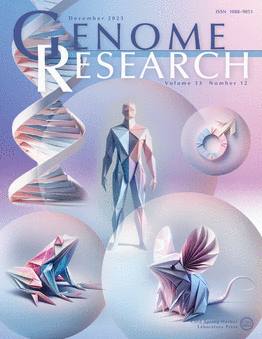Quadrupia provides a comprehensive catalog of G-quadruplexes across genomes from the tree of life
IF 5.5
2区 生物学
Q1 BIOCHEMISTRY & MOLECULAR BIOLOGY
引用次数: 0
Abstract
G-quadruplex DNA structures exhibit a profound influence on essential biological processes, including transcription, replication, telomere maintenance, and genomic stability. These structures have demonstrably shaped organismal evolution. However, a comprehensive, organism-wide G-quadruplex map encompassing the diversity of life has remained elusive. Here, we introduce Quadrupia, the most extensive and well-characterized G-quadruplex database to date, facilitating the exploration of G-quadruplex structures across the evolutionary spectrum. Quadrupia has identified G-quadruplex sequences in 108,449 reference genomes, with a total of 140,181,277 G-quadruplexes. The database also hosts a collection of 319,784 G-quadruplex clusters of 20 or more members, annotated by taxonomic distributions, multiple sequence alignments, profile hidden Markov models and cross-references to G-quadruplex 3D structures. Examination of G-quadruplexes across functional genomic elements in different taxa indicates preferential orientation and positioning, with significant differences between individual taxonomic groups. For example, we find that G-quadruplexes in bacteria with a single replication origin display profound preference for the leading orientation. Finally, we experimentally validate the most frequently observed G-quadruplexes using CD-spectroscopy, UV melting, and fluorescent-based approaches.Quadrupia提供了来自生命之树基因组的g -四联体的综合目录
g -四重体DNA结构对转录、复制、端粒维持和基因组稳定性等基本生物过程具有深远的影响。这些结构明显地影响了生物体的进化。然而,一个全面的、涵盖生物多样性的g -四重体图谱仍然是难以捉摸的。在这里,我们介绍了Quadrupia,迄今为止最广泛和最具特征的g -四重体数据库,促进了g -四重体结构在进化光谱中的探索。Quadrupia已经在108,449个参考基因组中鉴定出g -四重体序列,共有140,181,277个g -四重体。该数据库还拥有319,784个g -四plex集群的20个或更多成员的集合,通过分类分布,多序列比对,剖面隐马尔可夫模型和g -四plex 3D结构的交叉引用进行注释。对不同分类群中功能基因组元件的g -四重丛的检测表明,g -四重丛具有优先取向和定位,在不同分类群之间存在显著差异。例如,我们发现具有单一复制起源的细菌中的g -四重体对前导取向表现出深刻的偏好。最后,我们实验验证了最常见的观察到的g -四复体使用cd光谱,紫外熔融和荧光为基础的方法。
本文章由计算机程序翻译,如有差异,请以英文原文为准。
求助全文
约1分钟内获得全文
求助全文
来源期刊

Genome research
生物-生化与分子生物学
CiteScore
12.40
自引率
1.40%
发文量
140
审稿时长
6 months
期刊介绍:
Launched in 1995, Genome Research is an international, continuously published, peer-reviewed journal that focuses on research that provides novel insights into the genome biology of all organisms, including advances in genomic medicine.
Among the topics considered by the journal are genome structure and function, comparative genomics, molecular evolution, genome-scale quantitative and population genetics, proteomics, epigenomics, and systems biology. The journal also features exciting gene discoveries and reports of cutting-edge computational biology and high-throughput methodologies.
New data in these areas are published as research papers, or methods and resource reports that provide novel information on technologies or tools that will be of interest to a broad readership. Complete data sets are presented electronically on the journal''s web site where appropriate. The journal also provides Reviews, Perspectives, and Insight/Outlook articles, which present commentary on the latest advances published both here and elsewhere, placing such progress in its broader biological context.
 求助内容:
求助内容: 应助结果提醒方式:
应助结果提醒方式:


